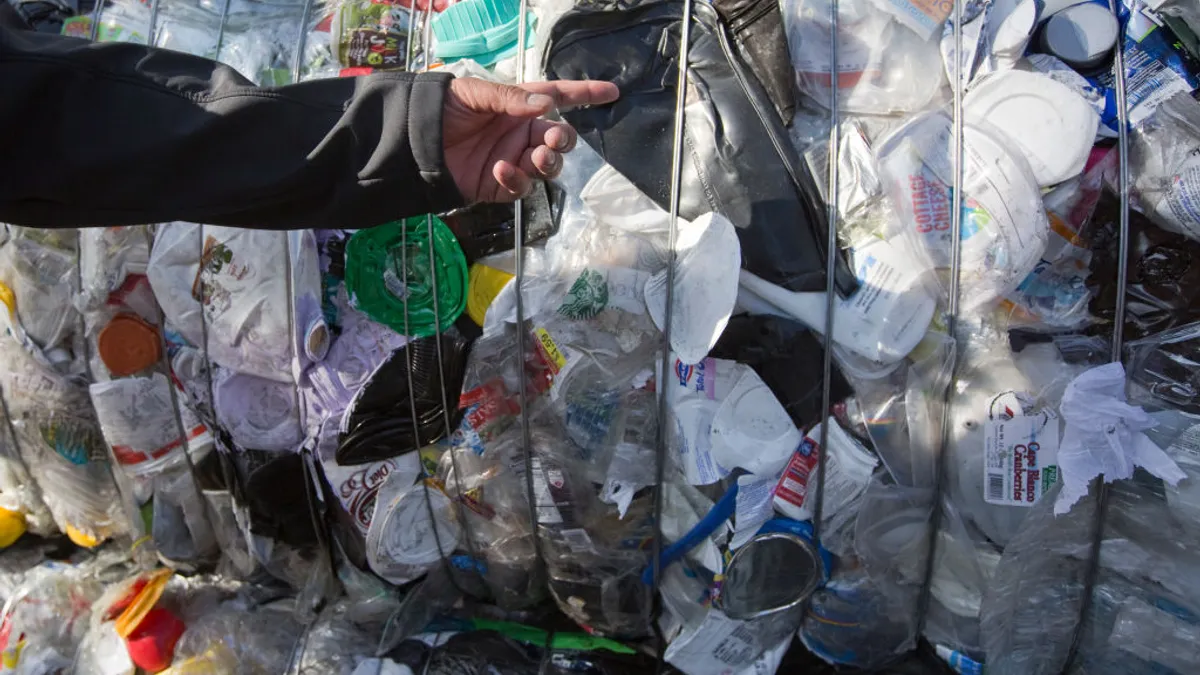The next four years of federal food and health leadership could bring changes to what packaging materials are allowed in the U.S. market.
Surgeon and public policy researcher Marty Makary is President-elect Donald Trump’s pick to head the U.S. Food and Drug Administration, which will operate under a Department of Health and Human Services potentially helmed by Robert F. Kennedy Jr. In announcing Makary, Trump highlighted the needs to evaluate “harmful chemicals poisoning” the U.S. food supply and address a “chronic disease epidemic.”
As part of a push to “Make America Healthy Again,” Kennedy has suggested he wants to crack down on food additives. He also previously said that “entire departments” within FDA “have to go.”
While the FDA may be better known for regulating security of the nation’s food supply and ensuring safety and efficacy of drugs, biologics, supplements and medical devices, its scope also includes overseeing substances that come into contact with food through packaging components. By the agency’s definition, packaging substances can be considered food additives.
Though there’s always opportunity for change with an agency transition, there are two additional notable circumstances at play this time, said Brandon Neuschafer, partner at Arnold & Porter: FDA’s food division is already undergoing a major reorganization, and there are signals that the incoming administration wants to change how FDA works.
“This one feels very different as far as not just enforcement priorities or policy priorities, but the potential for massive reorganization of how the agency operates. I don't think we really know what that looks like,” he said.
While individuals associated with the incoming administration haven’t necessarily spoken directly about packaging, there are potential clues from figures such as Kennedy, said Neuschafer. Kennedy’s concerns about food additives and other chemicals may cross over to packaging, he suggested.
“I wouldn't be surprised to see a lot of review of chemicals or products that have been in use for a very long time,” he said. “There is now some new interest in reassessing what might otherwise be considered settled science when it comes to certain food packaging materials.” Forthcoming actions could entail changes addressing certain substances, as well as procedural changes, which would likely require additional resources at the agency.
George Misko, partner at Keller & Heckman, speculated that Makary and Kennedy could get behind a more robust postmarket review program for food packaging materials. “There are an awful lot of chemicals that have been used in food products, as well as in packaging materials” that have not gone through a full-fledged review in decades, he said.
This could potentially include reviews of recycled plastics in food packaging. As for how a new administration might view recycled plastics, Neuschafer pointed out that Kennedy himself has a history as an environmentalist.
Kennedy has previously voiced support for strengthening and modernizing recycling systems, while also restricting hazardous plastics and chemicals. “Some of the toxic chemicals used in everyday items such as plastic packaging can cause cancer and birth defects,” he wrote in a 2023 op-ed.
Environmental Working Group, a nonprofit focused on protecting human health and the environment, including through research on toxics, said that an agenda to make America healthy would include banning toxic chemicals from packaging and plastics, like phthalates and vinyl chloride.
“People deserve strong protections from hazardous substances in their food and everyday products. EWG will continue to push for meaningful reforms to ensure the FDA is doing its job to protect public health instead of corporate interests,” said Scott Faber, EWG’s senior vice president of government affairs, in an email.
Sam Jockel, partner at Alston & Bird, noted that along with FDA’s potential scrutiny of food additives and already approved ingredients, he expects states to continue to ban or regulate substances of concern, which could include heavy metals, PFAS, phthalates or other food-contact substances.
On the labeling front, Jockel said industry has been expecting FDA to finalize a proposed rule redefining “healthy” claims used on food labels. “We are monitoring to see if the Trump Administration will seek to refine the criteria FDA previously proposed in redefining what it means for a food to be ‘healthy,’” he said in an email. This issue was live during Trump’s term when Scott Gottlieb was FDA commissioner.
“We also expect the FDA to propose rules on mandatory front-of-pack labeling,” Jockel said. This was among the items on the spring 2024 unified agenda this year, which could lead to packaging design changes for food items.
While still under Biden, FDA announced on Tuesday a request for information related to date labeling on food products, seeking feedback on industry practices and preferences, research on consumer perceptions and impacts to food waste. Federal agencies expressed interest in standardizing date labeling – which California will require by 2026 – in a national food loss and waste strategy finalized this year.























